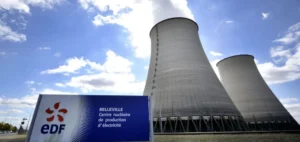The hydrogen-powered aircraft would represent a technological revolution for the aerospace sector, which has been hard hit by the health crisis.
To this end, the British government has decided to invest over £84 million. This research would open up new perspectives.
Hydrogen-powered aircraft: a revolutionary green technology
Priority to clean energy
Hydrogen-powered aircraft could solve some of the pollution problems caused by conventional aircraft.
At a time when the use of cleaner energy has become a global priority.
Against the backdrop of the pandemic, air traffic emissions were cut by almost 60% by 2020.
But not everything is due to the current crisis.
Read on energynews.co.uk: Is the UK’s energy white paper setting the bar too high?
Accelerating travel with hydrogen
Progress is being made in this sector, often overlooked, notably with the development of hydrogen-powered aircraft.
The latter would enable travelers to go abroad with greater respect for the environment.
It could also revolutionize our daily lives, with shorter flights.
This would have two positive consequences: less congestion on the roads and faster travel.
An £84 million bet
The creation of 5,000 jobs
The British government is betting everything on this new technology.
To this end, it has decided to subsidize three projects to the tune of £84.6 million.
Nearly 5,000 jobs could be created as a result.
Great expectations are pinned on these projects, which could play a central role in the fight against global warming.
According to UK Business Secretary Paul Scully:
“These pioneering projects broaden the horizons of future air transport, towards a greener future.
The target is zero emission flight by 2023.
It has become urgent for the country to end its dependence on polluting energies such as oil.
Three innovative projects subsidized
- The first elected project is H2GEAR with 27.2 million pounds: it is led by GKN, the world’s leading supplier of greener aerospace solutions.
It plans to develop an innovative liquid hydrogen propulsion system, suitable for all types of travel. - 12.3 million pounds are won by Hyfler II from ZeroAvia: leading developer of hydrogen-powered aircraft.
The funds will be used to increase the number of zero-emission engines. - Blue Bear Systems Research ‘s Inception receives £2.4 million in funding: it aims to develop a fully electrified zero-emission propulsion system for all aircraft.
Read on energynews.co.uk: Carbon neutrality: The UK releases £12 billion
Massive investment in aerospace
11 billion pounds in research and development
During the health crisis, the British government was keen to support a key sector of its economy.
A total of £11 billion was mobilized.
Massive spending on research and development over the last few years
In 2012, the Aerospace Technology Institute (ATI) was created.
Over £3.9 billion will be invested in aerospace programs between 2013 and 2016.
At the end of 2020, Boris Johnson presented his 10-point plan for a green industry to create 250,000 jobs.
As part of the Future Flight Challenge, £125 million of aerospace funding has been awarded to companies working on clean vehicles.
There is also the Jet Zero Council, a partnership between government and industry to find solutions for reducing CO2 emissions.
Developing “green” soft power
This year, the United Kingdom has the privilege of hosting COP26 in Glasgow.
Its pioneering role in hydrogen-powered aircraft is a considerable asset for its environmental diplomacy.
The British government has set itself the target of reducing its greenhouse gas emissions by at least 68% by the end of 2030.
Hydrogen-powered aircraft will undoubtedly be an ecological and, above all, economic asset for the UK.






















